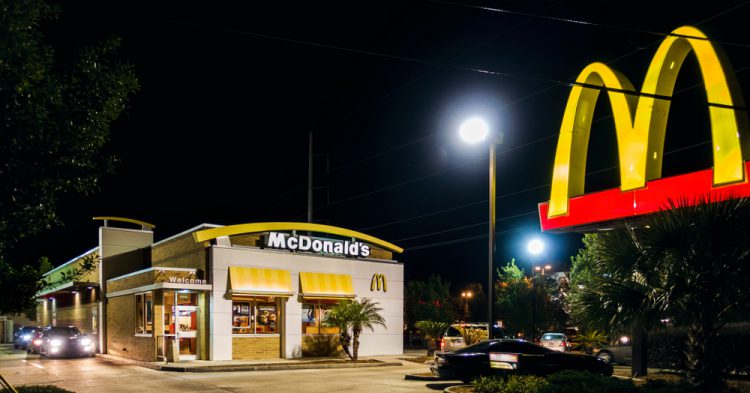In the age of social media, it seems like no secret can remain hidden for long. A young McDonald’s worker, known by her TikTok username Katieeclarkee, recently posted a video that unveiled a fascinating aspect of the fast-food giant’s drive-thru service. In this article, we will delve into the details of this revelation and explore how technology is playing a pivotal role in enhancing the efficiency and customer experience at McDonald’s drive-thrus.
Katieeclarkee’s TikTok video offers a unique glimpse into the inner workings of McDonald’s drive-thru. As customers approach the drive-thru menu board to place their orders, they are unknowingly being watched by a camera. This camera captures an image of both the customer and their car. The image is then relayed to the staff member at the cashier window, ensuring that they can identify which orders belong to which vehicles.
Katieeclarkee’s video showcases her register screen, which prominently displays the order alongside a clear image of the customer’s car. This revelation sheds light on the meticulous system in place to streamline drive-thru operations. With the ability to link orders to specific vehicles, McDonald’s can ensure that orders are accurate and that customers receive their meals promptly.
While the use of cameras in drive-thrus might seem like a necessary technological advancement, Katieeclarkee also humorously pointed out that customers should be aware of this surveillance. She advised, “So maybe don’t pick your nose when you order – because we see it and we judge you.” Her comment, lighthearted as it may be, highlights an important aspect of modern life: the pervasive nature of surveillance technology.
It’s important to note that the surveillance at McDonald’s drive-thrus is not intended for invasive purposes. Instead, it serves to enhance the customer experience by ensuring that orders are accurate and efficient. However, it does raise questions about the broader implications of surveillance in our daily lives, both within and outside the fast-food industry.
The implementation of cameras in drive-thru systems is not unique to McDonald’s. In fact, this technological innovation has become increasingly common in the fast-food industry as drive-thrus evolve into multi-lane operations. As workers in the comments section of Katieeclarkee’s video pointed out, the use of cameras helps manage the complexity of serving multiple vehicles simultaneously.
The transition to multi-lane drive-thrus has been driven by the need to serve customers more quickly and efficiently, especially during peak hours. Cameras play a crucial role in this transition by providing a visual aid to staff members who must ensure that each order is correctly matched with the corresponding vehicle. This level of precision would be challenging to achieve without the assistance of technology.
The integration of cameras in drive-thrus is just one example of how technology is being leveraged to enhance the customer experience at fast-food restaurants. In addition to improving order accuracy, technology also facilitates faster payment processing through contactless payment methods, reducing the time customers spend waiting in line.
Moreover, many fast-food chains have developed mobile apps that allow customers to place orders in advance and pick them up without waiting in the drive-thru queue. These apps often offer rewards and loyalty programs, further incentivizing customers to use technology for a more convenient and efficient dining experience.
While the use of technology in drive-thrus offers numerous benefits, it also raises privacy concerns and ethical considerations. Customers may be unaware of the extent to which their data is being collected and used. The potential for misuse or data breaches is a valid concern, and it underscores the importance of robust data protection measures.
Fast-food chains must be transparent about their data collection practices and ensure that customer information is handled responsibly and securely. Additionally, customers should be informed about the presence of cameras and other surveillance technologies, allowing them to make informed decisions about their privacy.
Katieeclarkee’s TikTok revelation has provided valuable insight into the inner workings of McDonald’s drive-thru service. The use of cameras to capture images of customers and their vehicles is a testament to the role of technology in enhancing efficiency and order accuracy. However, it also highlights the broader implications of surveillance technology in our daily lives.
As technology continues to shape the fast-food industry and improve customer convenience, it is crucial for businesses to strike a balance between efficiency and privacy. Transparency and responsible data handling should be at the forefront of these advancements, ensuring that customers can enjoy a seamless dining experience without compromising their privacy.
